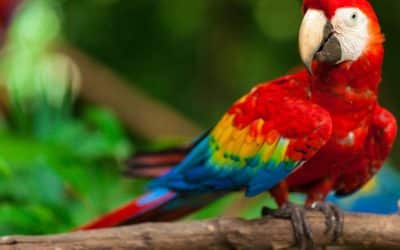Costa Rica is built for adventure. One hour you’re sipping a café chorreado after a dawn surf; the next you’re drifting above jungle canopies, tracing the curve of a Pacific bay while scarlet macaws flash like confetti below. Culture hums on the ground—marimbas in the plaza, weekend fútbol, fish sizzling in beachside sodas—while eco-tourism and real estate push new horizons. Wildlife, food, entertainment and community all sit beneath your wing. And the thermals? They’re as friendly as the locals.
Why is Costa Rica brilliant for paragliding?
Costa Rica shines because consistent tropical thermals meet wildly varied terrain, giving smooth lift and film-worthy views.
Morning sea breezes, lake effects, and mountain saddles keep flying windows open across seasons.
- Thermals with manners: Along the Pacific, sea-breeze cycles build gentle, predictable lift—ideal for relaxed tandems and long ridge runs.
- Terrain made for soaring: Headlands, volcano shoulders and valley rims create dependable ridgelift for beginner-friendly flights and advanced play.
- Year-round options: Dry season brings crisp stability; green season paints the hills emerald and often serves buoyant late-morning glass.
Where can I paraglide in Costa Rica?
You can fly at several established sites on the Pacific coast and in the volcanic highlands, with pro operators offering tandems most days.
Each zone has its own flavour—beach glass, jungle thermals, or highland panoramas.
- Caldera, Puntarenas: The country’s classic ridge site. Smooth sea breeze, sweeping views of the gulf, and sunsets that make you forget to breathe. Excellent for first flights.
- Jacó / Herradura headlands (Pochotal): Coastal hills that catch the afternoon wind; look for frigatebirds marking the lift while surfers stitch lines below.
- Dominical & Uvita (Bahía Ballena): Lush slopes dropping to whale-tail sands; expect mellow soaring and occasional dolphin sightings from the air.
- Arenal / El Castillo: Volcano silhouettes and lake effect thermals. On good days you float past patchwork farms and the glitter of wind ruffles on Lago Arenal.
- Naranjo & Palmares (Central Valley): Coffee-country escarpments with long, scenic glides over red-roof towns and mango rows.
- Turrialba highlands: Cooler air and big-sky views toward sugarcane valleys; great for pilots who love mountain ambience.

How safe is paragliding here?
It’s considered safe because reputable operators follow international standards, respect weather limits, and maintain modern kit.
Briefings are plain-English, checks are thorough, and “not today” is a respected answer.
- Clear briefings: Take-off run, seating cues and landing posture are rehearsed on the ground so they’re second nature in the air.
- Gear discipline: Tandem wings, reserves and harnesses are checked before every launch; service logs and retire-by dates actually mean something here.
- Weather culture: If gusts misbehave, flights are paused or rebooked—no drama, just professionalism.
What does a first tandem feel like?
A tandem feels like a scenic chairlift that learned to swoop—more glide than drop, more grin than scream.
You jog a few steps, the wing lifts, and the ground politely leaves.
- The take-off: A short run into the breeze; your pilot powers the wing, you keep moving, and suddenly you’re seated with the coastline unfurling.
- The ride: Smooth float with optional gentle turns. Ask for “mellow” if you want meditative; ask for “spicy” if you fancy a playful wingover or two.
- The view: Toucans over valleys, reef patterns under clear water, fishing pangas tracing silver wakes—Costa Rica becomes a living map.
What should I wear and bring?
Dress for sun and breeze, and keep your hands free for photos.
Most operators supply helmets, harnesses and windbreakers.
- Footwear: Trainers with decent grip for confident launches and soft landings—save the flip-flops for the ceviche bar.
- Sun strategy: Sunglasses with a strap, mineral sunscreen, light long sleeves; clouds move quickly here.
- Camera plan: A secured phone or action cam; many pilots offer in-flight photo/video packages with safe mounts.
How do I choose a trustworthy operator?
Choose teams with certified pilots, strong reviews, modern equipment and transparent weather policies.
A quick pre-book chat reveals their ethos.
- Certificates & hours: Ask about ratings and flight time; pros are happy to talk credentials.
- Equipment age & care: Look for recent gliders on a documented maintenance cycle.
- Weather flexibility: Clear rebook/refund terms show they put conditions—not schedules—first.
When’s the best time of day to fly?
Mornings are often smoothest, while late afternoons trade calm air for golden light.
Midday can be stronger and bumpier depending on site and season.
- Sunrise serenity: Gentle thermals for first-timers; fewer bumps, more glide.
- Golden hour glow: Long shadows, warm colour, and glassy sea—your photos will thank you.
- Local nuance: Lake-effect sites (Arenal) vs headlands (Caldera/Jacó) behave differently; your pilot will time it right.
How does paragliding fit into my Costa Rica trip?
It slots neatly between beach breakfasts and volcano afternoons.
The country’s compact scale lets you stack thrills without rushing.
- Adventure stack: Sunrise glide at Caldera, midday waterfall near Jacó, sunset tacos in Herradura.
- Highlands loop: Arenal tandem, hot-spring soak, farm-to-table dinner in La Fortuna.
- Wildlife add-ons: Spot rays and turtles from the air; meet them by snorkel after lunch.
FAQ
Do I need experience?
No. Tandem pilots do the flying; you enjoy the ride and follow simple cues.
Are there weight or age limits?
Yes, for safety. Ranges vary by operator and conditions—ask when booking.
What if I fear heights?
Many people find the floating sensation calming; there’s no ledge-looking vertigo.
Can flights be cancelled?
Yes—weather rules. Good operators rebook or refund per policy.
Will I feel sick?
Rare. Tell your pilot and they’ll keep turns gentle and duration comfortable.
Can I bring my own camera?
Yes, if secured. Pilots often provide safe mounts and media packages.How long is a flight?
Typically 15–30 minutes, sometimes longer on buoyant days.






